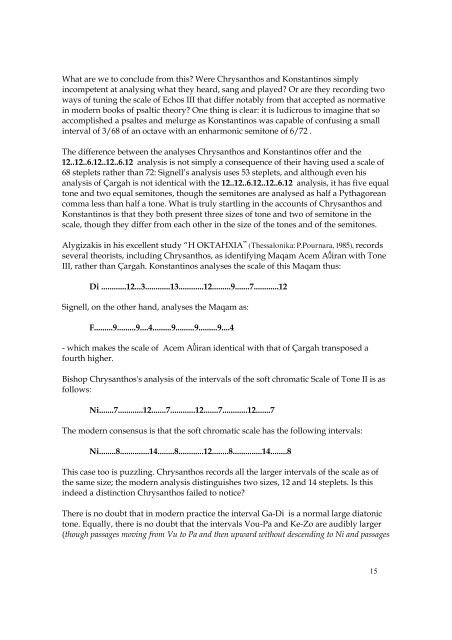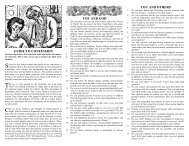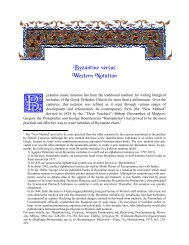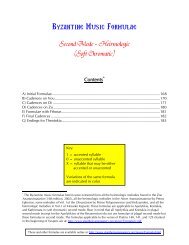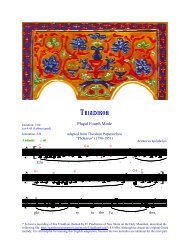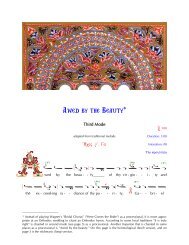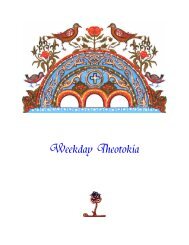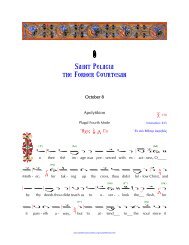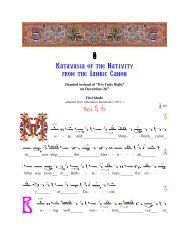Reading Psalmodia (PDF) - St. Anthony's Monastery
Reading Psalmodia (PDF) - St. Anthony's Monastery
Reading Psalmodia (PDF) - St. Anthony's Monastery
You also want an ePaper? Increase the reach of your titles
YUMPU automatically turns print PDFs into web optimized ePapers that Google loves.
What are we to conclude from this? Were Chrysanthos and Konstantinos simplyincompetent at analysing what they heard, sang and played? Or are they recording twoways of tuning the scale of Echos III that differ notably from that accepted as normativein modern books of psaltic theory? One thing is clear: it is ludicrous to imagine that soaccomplished a psaltes and melurge as Konstantinos was capable of confusing a smallinterval of 3/68 of an octave with an enharmonic semitone of 6/72 .The difference between the analyses Chrysanthos and Konstantinos offer and the12..12..6.12..12..6.12 analysis is not simply a consequence of their having used a scale of68 steplets rather than 72: Signell’s analysis uses 53 steplets, and although even hisanalysis of Çargah is not identical with the 12..12..6.12..12..6.12 analysis, it has five equaltone and two equal semitones, though the semitones are analysed as half a Pythagoreancomma less than half a tone. What is truly startling in the accounts of Chrysanthos andKonstantinos is that they both present three sizes of tone and two of semitone in thescale, though they differ from each other in the size of the tones and of the semitones.Alygizakis in his excellent study “H OKTAHXIA” (Thessalonika: P.Pournara, 1985), recordsseveral theorists, including Chrysanthos, as identifying Maqam Acem AÕiran with ToneIII, rather than Çargah. Konstantinos analyses the scale of this Maqam thus:Di ............12...3............13............12.........9.......7............12Signell, on the other hand, analyses the Maqam as:F.........9.........9....4.........9.........9.........9....4- which makes the scale of Acem AÕiran identical with that of Çargah transposed afourth higher.Bishop Chrysanthos's analysis of the intervals of the soft chromatic Scale of Tone II is asfollows:Ni.......7............12.......7............12.......7............12.......7The modern consensus is that the soft chromatic scale has the following intervals:Ni........8..............14........8............12........8..............14........8This case too is puzzling. Chrysanthos records all the larger intervals of the scale as ofthe same size; the modern analysis distinguishes two sizes, 12 and 14 steplets. Is thisindeed a distinction Chrysanthos failed to notice?There is no doubt that in modern practice the interval Ga-Di is a normal large diatonictone. Equally, there is no doubt that the intervals Vou-Pa and Ke-Zo are audibly larger(though passages moving from Vu to Pa and then upward without descending to Ni and passages15


